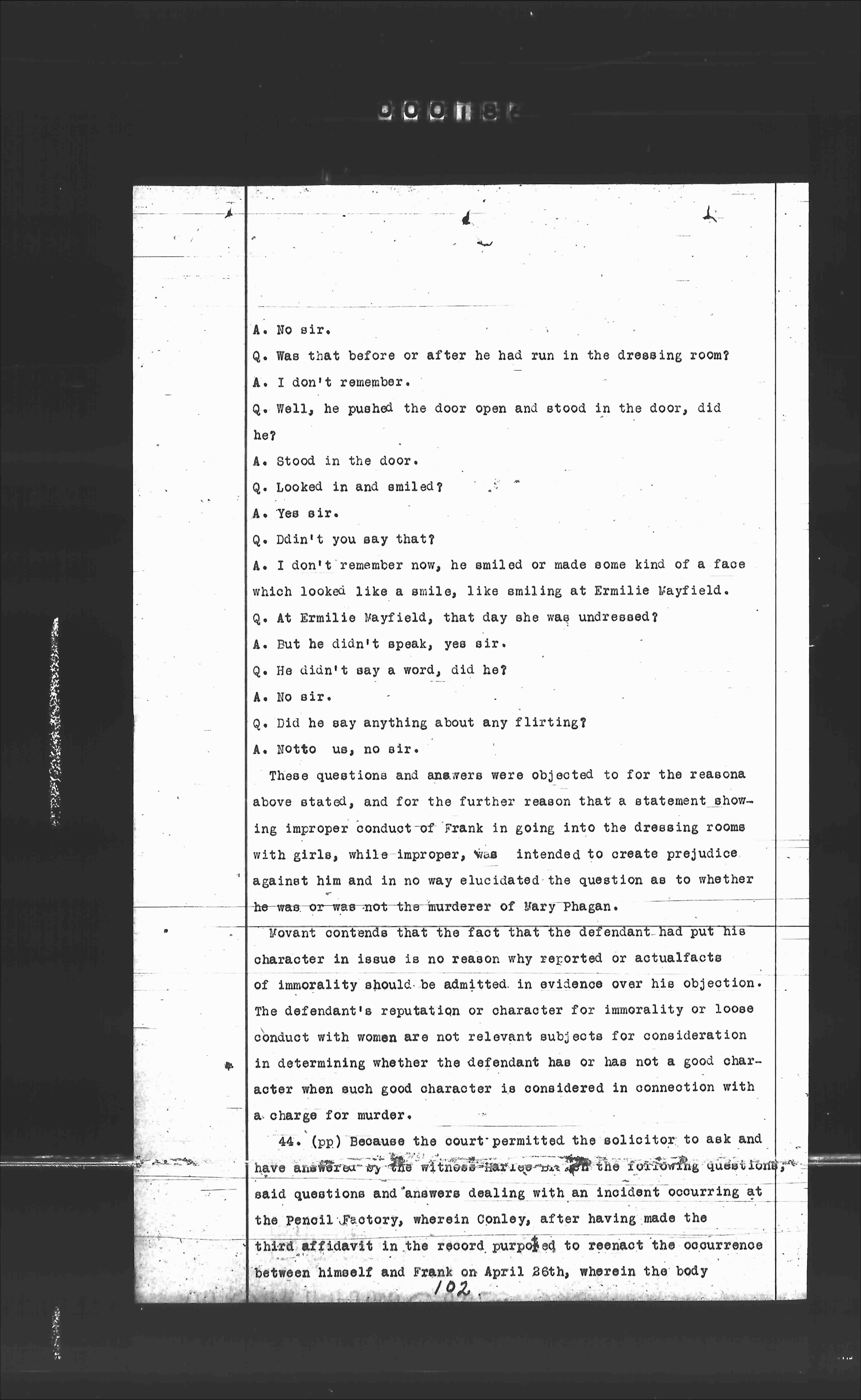
Here is the extracted text from the image:
A. No sir.
Q. Was that before or after he had been in the dressing room?
A. I don't remember.
Q. Well, he pushed the door open and stood in the door, did he?
A. Stood in the door.
Q. Looked in and smiled?
A. Yes sir.
Q. Didn't you say that?
A. I don't remember now, he smiled or made some kind of a face which looked like a smile, like smiling at Ermile Mayfield.
Q. At Ermile Mayfield, that day she was undressed?
A. But he didn't speak, yes sir.
Q. He didn't say a word, did he?
A. No sir.
Q. Did he say anything about any flirting?
A. Not to us, no sir.
These questions and answers were objected to for the reasons above stated, and for the further reason that a statement showing improper conduct of Frank by going into the dressing rooms with girls, while improper, was intended to create prejudice against him and in no way elucidated the question as to whether he was or was not the murderer of Mary Phagan.
Hoyant contends that the fact that the defendant had put his character in issue is no reason why reported or actual facts of immorality should be admitted in evidence over his objection. The defendant's reputation or character for immorality or loose conduct with women are not relevant subjects for consideration in determining whether the defendant has or has not a good character when such good character is considered in connection with a charge for murder.
44. (pp) Because the court permitted the solicitor to ask and have answered by the witness Dalton the following question: said questions and answers dealing with an incident occurring at the Pencil Factory, wherein Conley, after having made the third affidavit in the record, purposed to reenact the occurrence between himself and Frank on April 26th, wherein the body